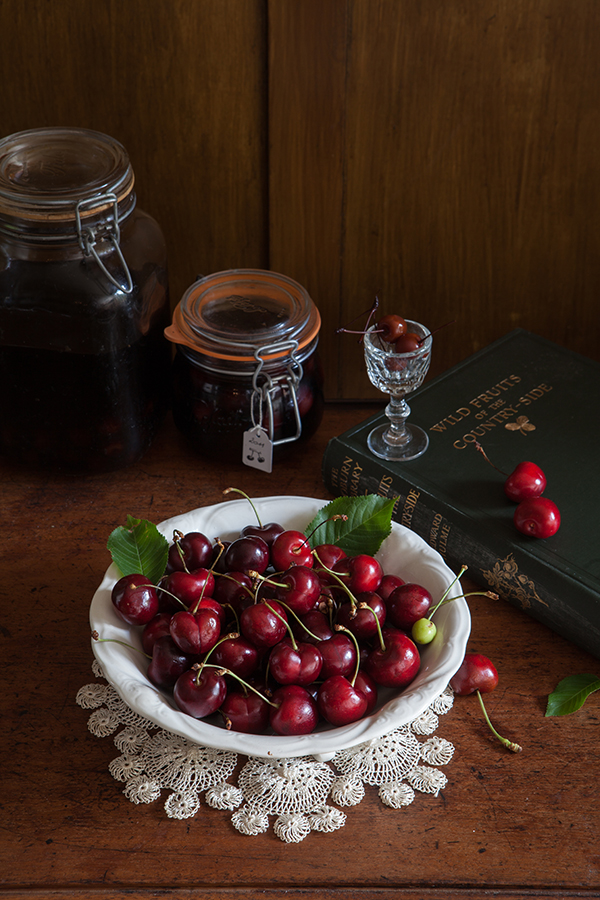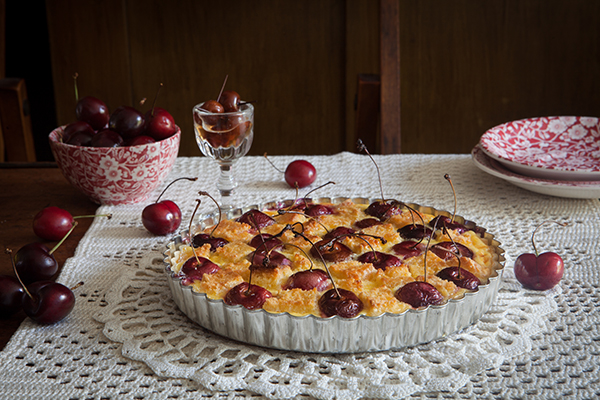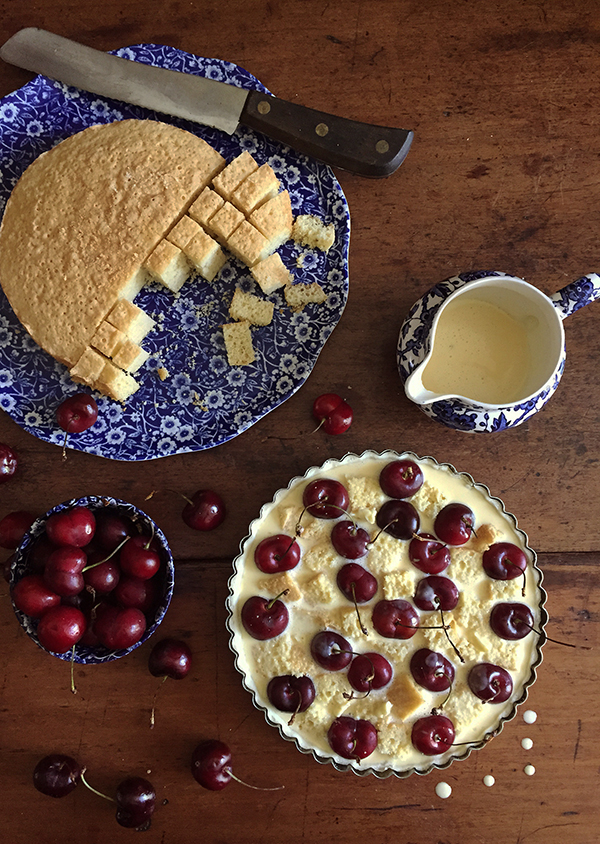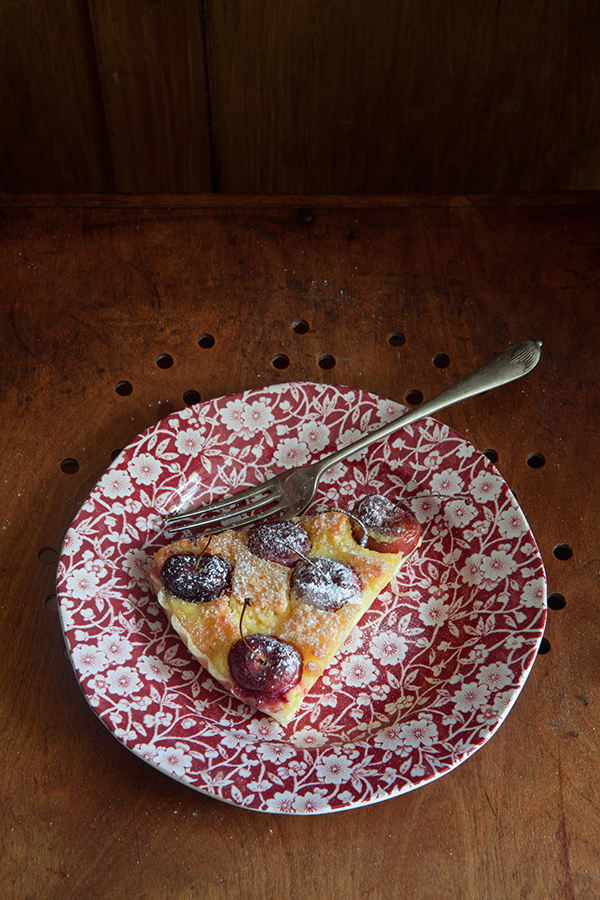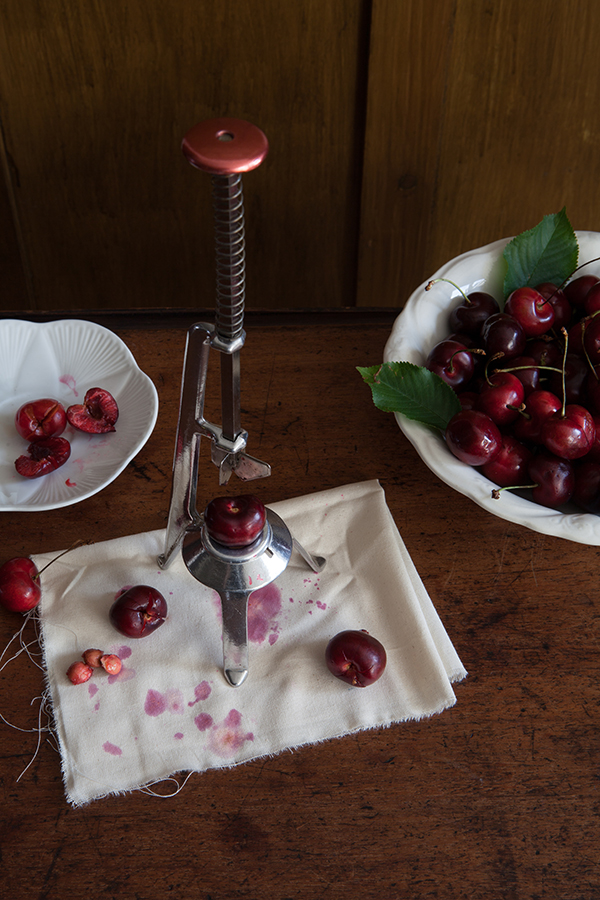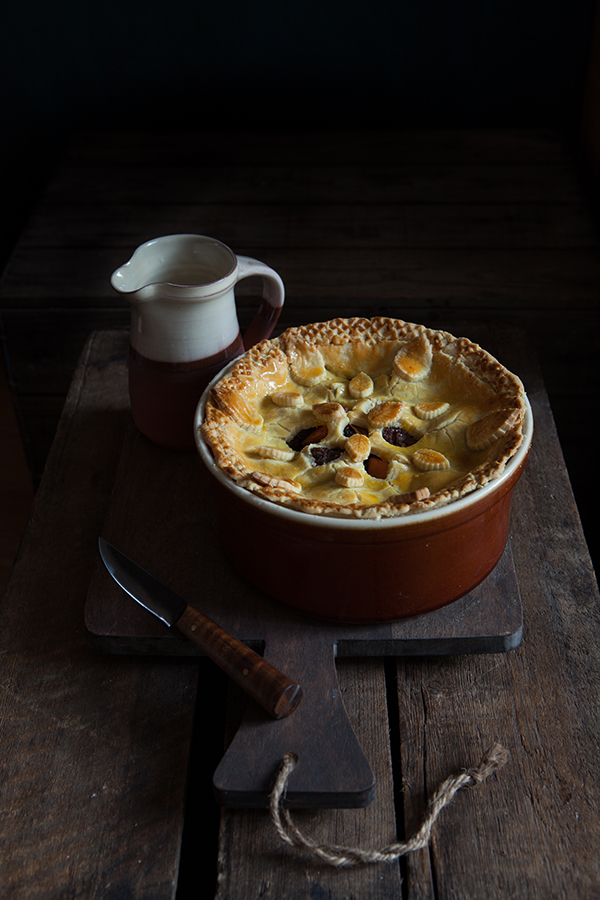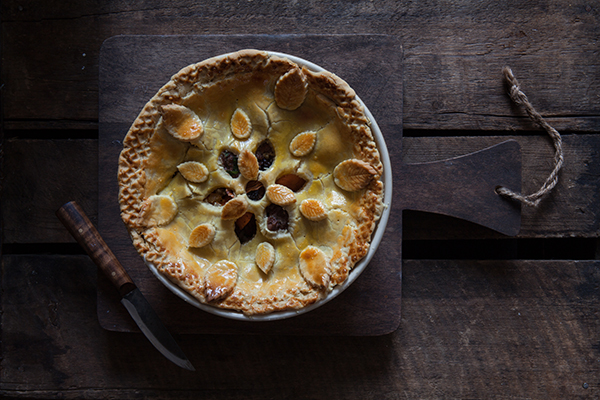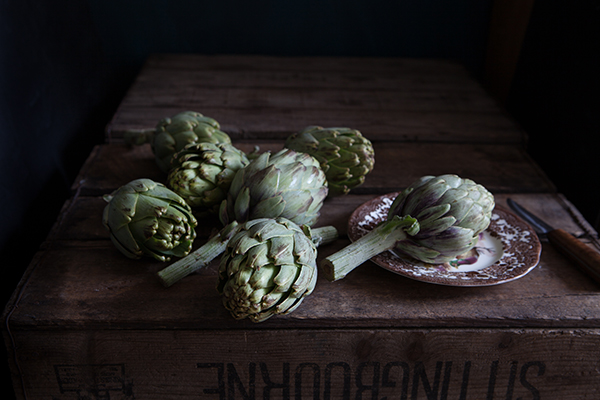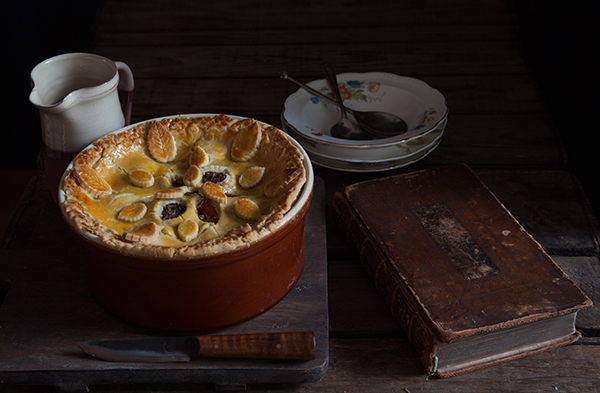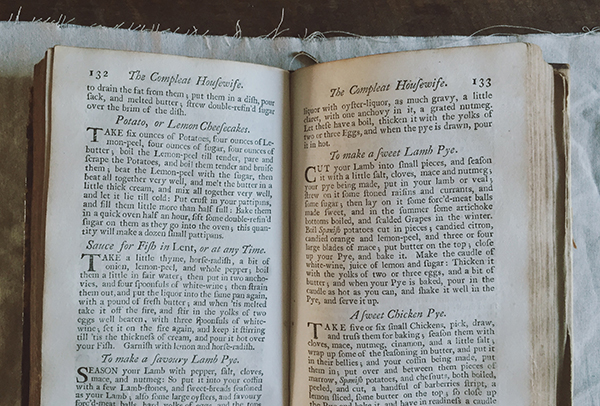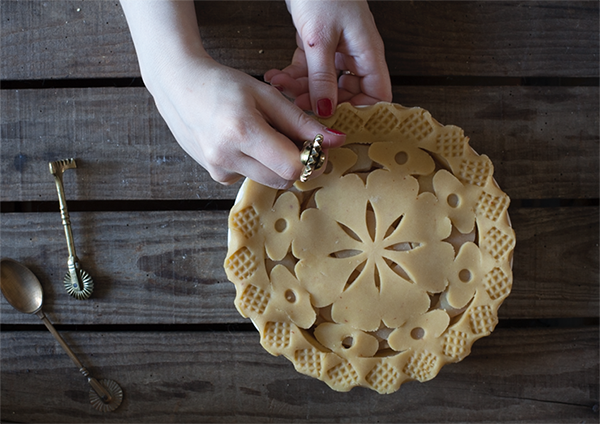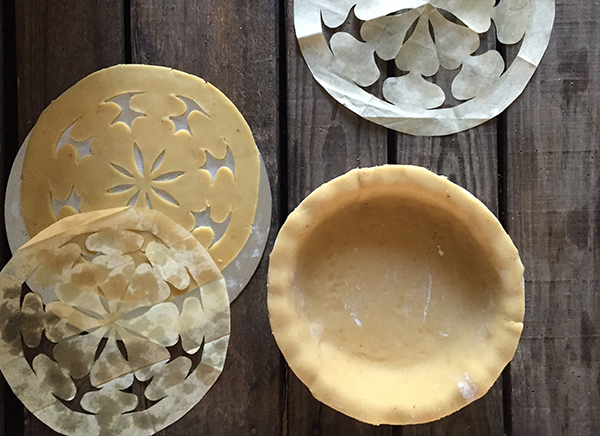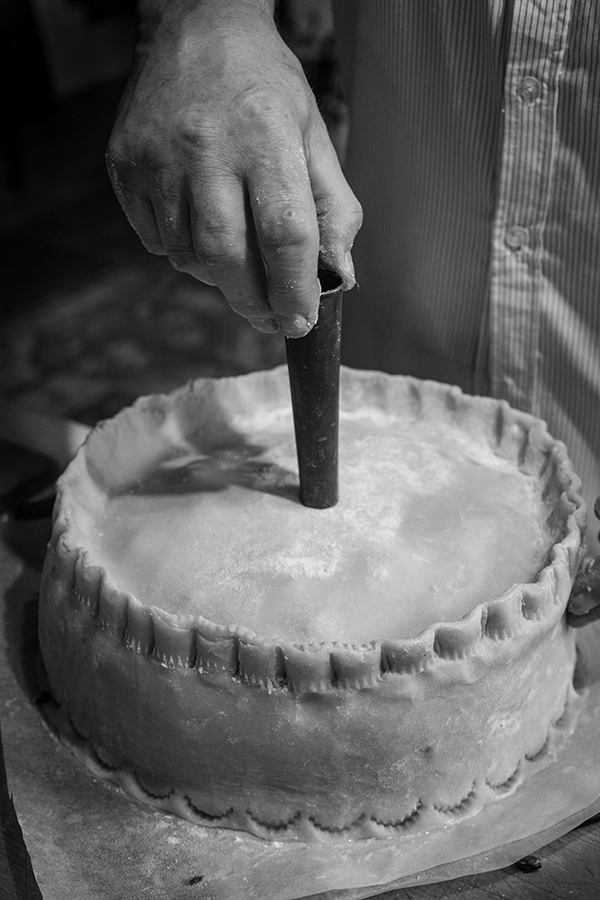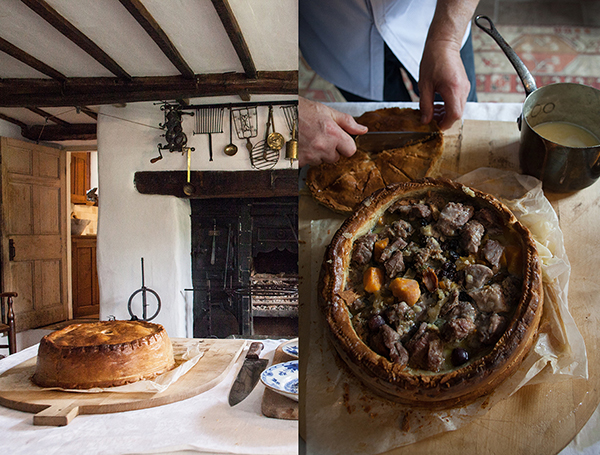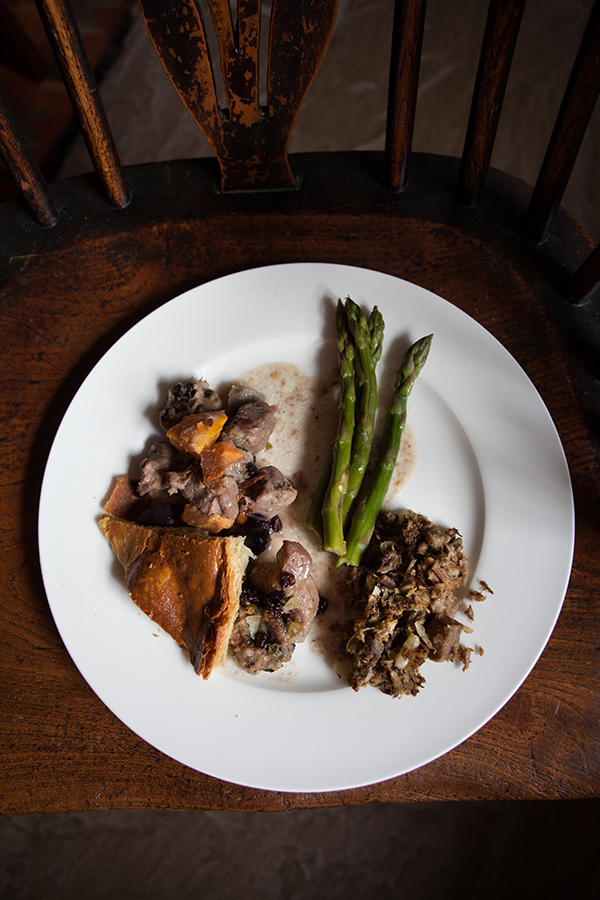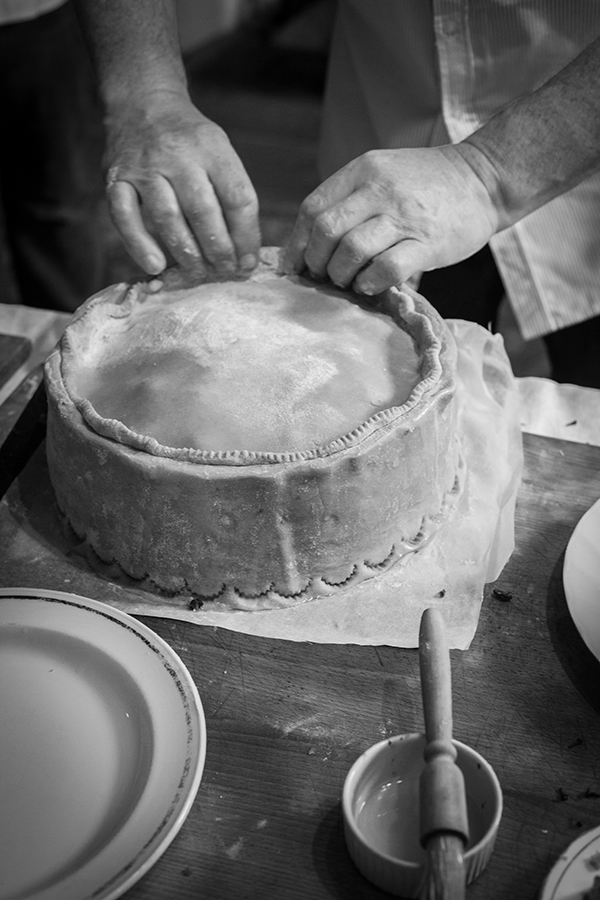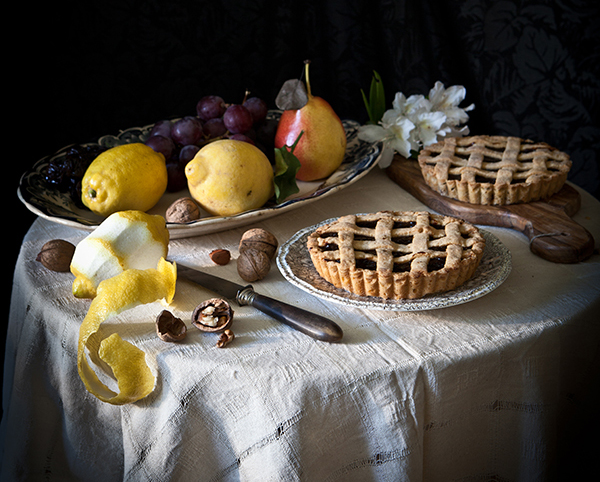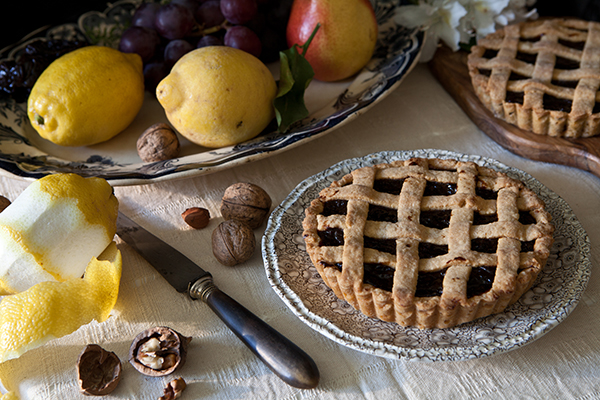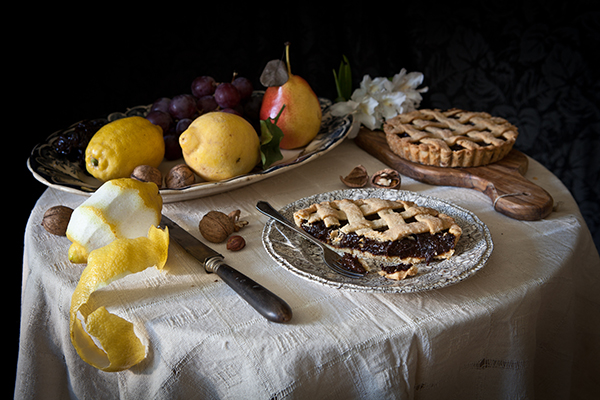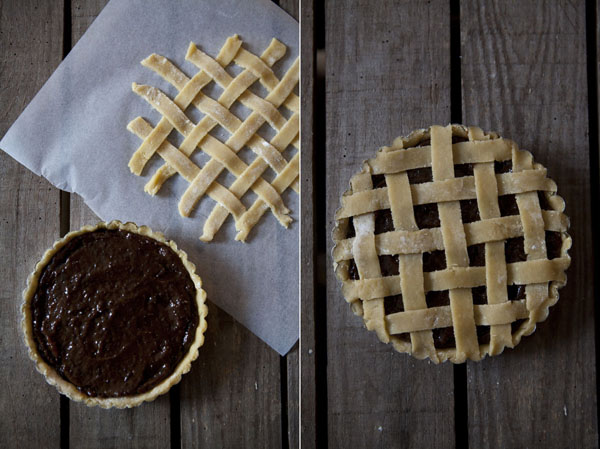The post Cherry tart and prostitution appeared first on Miss Foodwise.
]]>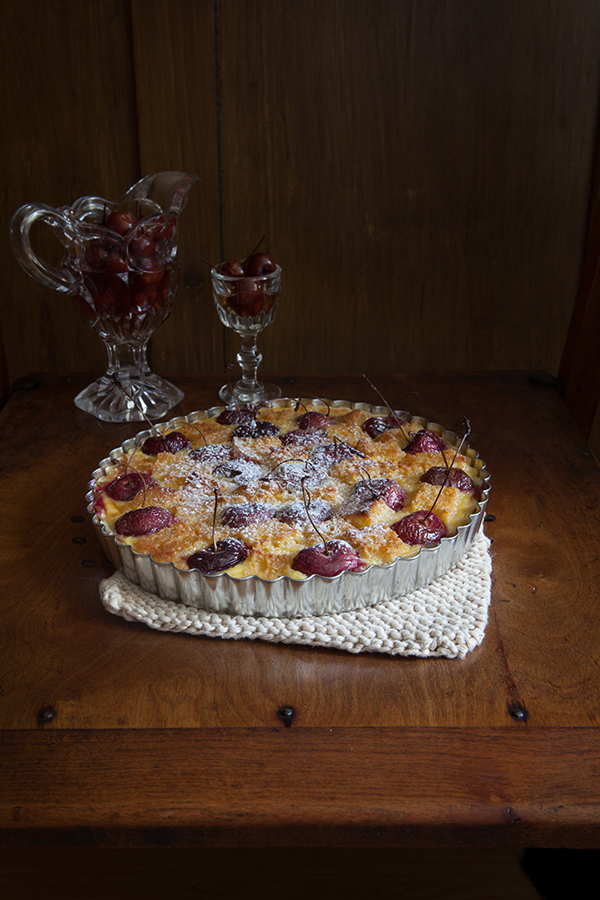
When I was a little girl my parents and I used to travel around Hungary in the summer. I can still remember the warm climate, and the little dresses I wore, many of which I have in a shoe box upstairs. What I also remember is the Bed and Breakfast, back then called ‘Zimmer frei’ in Hungary, which was run by an old couple. The woman looked a lot like my aunt and the man I can’t remember much. Their house was large for Hungary and by a main road, not far from a little restaurant by the river Danube where I always ate a very good omelette for supper.
Our time with the old couple was like staying with your grandparents, sure communication was complicated, they spoke a little German, so did my parents, and I as a four year old strangely enough spoke a good word of German too. They were loving people and love can be shown without the language barrier. Each day we entered our room, the old lady surprised us with a large stone bowl of the most plump cherries I have ever seen. As a child, and a picky eater, those cherries were some kind of heaven. Food I knew, and was so expensive at home that I could never really eat so many that my fingers would be stained in cherry juice.
And every day a bowl appeared, and every day we were greeted by the most loving smiles and gestures by these two wonderful people.
Two years after our last visit to the old couple’s Zimmer Frei we decided to do a detour and stay with them for a couple of nights. I requested it especially because I was eager to see my Hungarian grandparents as they had become to be for me. My parents too had never encountered such kindness and were eager to stay there again too.
So we drove to the rather large Hungarian house and as we parked the car I ran towards the door where the old lady – she must have been in her early seventies – was sitting in her chair.
But while I was running towards her the first thing I noticed was the anxious look in her eyes, and then the dress that she wore. As before she always wore granny clothes, now she was wearing a black embroidered dress with a deep decollete and very large earrings.
Anxious as she was, but really happy to see us, she told my parents that she would love it if we would stay but that she was no longer a Zimmer Frei since her husband had died the year before.
I wondered what the young girls were doing there if she wasn’t offering lodgings anymore, and somehow, while she was showing us to our room and I saw how the house had changed and lost all its granny appeal, I knew. I knew without without having the knowledge of years.
Heartbroken and realising that there might not be a bowl of cherries in our room each day, and hurt by the uncomfortable anxious look in my Hungarian grandma’s eyes we said we’d go for dinner and then come back to decide if we would stay.
The granny had tears in her eyes, and I felt like she was holding on to the summers and the bowls of cherries as much as I was doing. But those times were gone. The light had gone out in the rather large Hungarian house. It was replaced by sorrow, regret, and a need for survival.
So we ate an omelette at the restaurant by the river, and my parents gave me the choice on whether to stay at the granny’s house. Too young to understand what was happening at the house, but old enough to feel there was something wrong, I told them that I felt that it wasn’t right for us to stay there.
So we drove back to the granny’s house, and said our goodbyes, granny still trying to convince us we were so very welcome. But I was feeling so very sad. I could not understand what had happened and somehow I knew that by staying we would not only make her happy, we would also maker her very sad.
She had made her choice, and there would be no more bowls of cherries.
I hope she was at peace at the end of her life, so very long ago.
In her memory I have prepared this cherry tart, inspired by 18th century tarts, some of which you’ll find in my upcoming book. It’s a perfect tart to make when you have leftover sponge cake, that way you don’t need to bake a cake especially. The tart has a pleasant texture, though not like the tarts you are probably used to. Let me know if you’ve tried it!
x R
Cherry tart with curstard and sponge cake
What you need
Shortcrust pastry
- 180 g white flour
- 100g cold butter
- 20 g icing sugar
- tiny pinch salt
- 1 egg yolk
- 1 tbsp of cold water
Custard
- 250 ml cream
- 3 egg yolks
- a blade of mace
- a stick of cinnamon
- 1tbsp of raw cane sugar
Filling
- Sponge cake, preferably stale
- 2 tbsp of brandy (optional)
- a punnet of cherries
- 2 tbsp of unsalted butter – or bone marrow
- 22-24 sized pie pan or plate
The post Cherry tart and prostitution appeared first on Miss Foodwise.
]]>The post 18th century Sweet Lamb Pie appeared first on Miss Foodwise.
]]>When I tell people about my passion for historical dishes, there are always those who look at me with disbelief and some amusement. They claim those ancient dishes were made of rotting meat masked with an abundant use of spices, or stodgy pottage, all eaten with the hands like barbaric creatures. It can’t be good, it can’t be imaginative, it just can’t be …
The theory that food in the Middle Ages was highly spiced to mask the flavour of rotting meat has been discarded as pure nonsense in the last ten years. Those who were served spiced dishes were privileged, those cooking with it were the master cooks to kings and queens. People of status that not only could afford this immense luxury, but also had a good supply of fresh meat and fish from their estates and beyond.
Our ancestors – of the elite – had a good understanding about spices, and how to combine them. Those flavour combinations would often taste peculiar to us. Not at all in a wrong way, but in a way that you realise it is a flavour sensation you have never tasted before.
This brings me to how tastes have changed.
Today everything is usually either sweet, salty or spicy. Bitter is making a modest comeback and sour too, but these flavours are seldom combined in our ‘modern’ European cuisine. It is even so that a lot of our foods are processed in factories which add flavour essences to make the food taste the same every time you prepare it. Of course this doesn’t happen when you cook from scratch, but it is an unfortunate fact that people in the UK buy a lot of ready meals. It is a trend that has luckily not taken off in Belgium, but it is very possible we’re not far behind. Joanna Blytham recently published a book about these practices in food processing factories, and she rings an alarm bell and employs you to smell your food, to taste, and realise the smells and tastes are not from natural ingredients. This is an evolution, when more people eat processed food, they get an idea about how tomato tastes, and how a beef stew should taste. It goes so far that when those people taste the real thing, they can’t take the sourness of a real tomato, the texture of the skin, and they find their own beef stew too bland and wonder where the flavour of the ready meal comes from. It’s not tomato, and it’s not beef. Butter in buttery pastry is not butter but other fats, with added butter flavour. It might taste like butter, but it might not completely and it might even change your taste and idea of how it should taste all together. I will go into Joanna’s eye-opening book in another posting but you get the idea for now. Today many of the people taste food, but don’t really taste the produce. Their tastes change. A very simple example is when I give someone a glass of raw milk to drink, I am used to it and drink it all the time, but my guests often can’t finish another sip because they find the flavour too ‘animal-like’. Most milk you buy in the supermarket to me tastes like white water, but this is how the people think milk tastes like these days.
Eliza Smith’s Sweet Lamb pie from 1727 is one of those dishes that really show off the old way of spicing food. The flavours come through in layers if you get what I mean. It is not really sweet, but the spices that are used, nutmeg, mace and cloves were considered sweet spices and used as a sweetener. Sugar is added too, but used rather like a spice. In addition to these spices, currants and candied peel are added to bring extra sweetness. Then also sweet potato is added, and artichoke hearts. The 1727 book also mentions that when artichokes aren’t in season, one can use grapes too.
The pie is built with pieces of diced lamb, dusted in the spices, and meatballs made with lamb meat, suet, currants and the same sweet spices with the addition of fresh parsley.
Layers are constructed of lamb, lamb meat balls, sweet potato and artichoke.
When your pot or pie is full, a blade of mace is added and the pie is placed in the oven for just over an hour. Just when you’re ready to serve, a ‘Caudle’ is made, this is a sauce which is added to the pie by pouring it in when you are ready to serve. It is usually there to lift the flavours of the dish. In this case the caudle is made with white wine, lemon juice, a little sugar and a couple of egg yolks.
This sauce gives the dish a little acidic kick and will guaranty you to want to empty the saucepan until the very last drop.
The pie can either be made in a free-standing pie crust like you see in the pictures I took when I was at Food Historian Ivan Day’s house, for a weekend of Georgian cooking last year. A hotpot is however another way of making this pie, this is a closed casserole dish used in the North of England, or you can use a deep oven dish and add a pastry lid, which is what I did the last time I made the pie, and what you can see in the first pictures here.
I made this Sweet Lamb pie not too long ago when we had two chefs coming for dinner, I did not know how they were going to react to the flavours of this dish.
Fortunately my friends are all about good, honest and natural food so they were eager to try. And they enjoyed it, one of the duo even asked me if it was okay to lick his plate and clean out the saucepan of caudle.
I say that’s mission accomplished, don’t you think?
The pie is incredibly flavoursome and eats just wonderful with the different vegetables and meat; the addition of a piece of salty pie pastry is a bonus but not a must if you aren’t up to making your pastry, but please don’t use shop bought pastry… that is just plain evil and doesn’t even contain butter!
I made the pie you see in the pictures above with pastry I had leftover from my recent pastry project… You might have spotted it on instagram.
18th century Sweet Lamb Pie
- 250 g lamb meat from the leg
- 250 g lamb mince (if you buy a leg, you can use the leftover leg to mince)
- 2 large sweet potatoes, parboiled, cut in dice
- 4 small or 2 large artichoke hearts, parboiled, cut in dice
- or when you don’t have artichokes, use a handful of grapes, blanched.
- 1 tsp of ground mace
- 1 tsp of ground nutmeg
- 4 cloves, beaten
- 2 blades of mace
- a generous pinch of good black pepper – or 3 pieces of long pepper, beaten
- 1 tsp each of candied lemon and orange peel, in small cubes
- 50 g of shredded suet
- fresh parsley cut finely, about 1 tbsp
- currants 50 g
For the Caudle
- The juice of 1 lemon
- The same quantity of white wine
- 1 tsp of sugar
- 1 egg yolk
- a little knob of butter
Preheat your oven to 160° C
Beat your spices, but leave the two blades of mace whole.
Dust the meat with half the spices, add the other half to the minced meat.
Make your minced meat balls with the spices, suet, parsley and 2 tbsp of currants.
Have all your components of the dish ready so you can start making the layers.
Place some meat, meatballs, sweet potato and artichoke into your dish or pastry and strew over some currants and candied peel, continue until the pie is full.
Close the pie with pastry, making a hole for steam, or put the lid on and pop in the middle of your oven for 1 hour to 1hr and 15 minutes. This could be longer, it depends on the quality of your meat, decent meat needs less cooking. So try and taste, when you have a pastry cover, user a skewer to prick to see if the meat is tender.
When ready, take out of the oven and make your Caudle.
Bring your wine and lemon juice to a simmer with the sugar, in a separate bowl, have the yolk ready and add the warm caudle like you would for a custard. Finish with a little knob of butter and warm again over the fire.
Pour the caudle into the pie, and serve. The caudle will mix with your pie juices and create a sauce.
If you’re making pastry, this is an easy recipe to try
For the pastry
- 300g plain white flour
- 100g unsalted butter
- 100g shredded suet
- a generous pinch of salt
- 125 ml ice cold water
- 1 egg, beaten
- Combine the flour, butter, suet and salt in a large mixing bowl and use your fingers to rub the butter into the flour. Keep on doing this until the mixture resembles breadcrumbs.
- Pour in the water and start pressing the liquid into the breadcrumb-like mixture. Be gentle as you must be careful not to overwork the dough.
- When you have created a rough dough, wrap it in cling film and let it rest in the fridge for an hour or more. You can prepare the pastry the day before if you’re feeling organised.
- Use the beaten egg to eggwash the edges of the piedish.
- Take your pastry out of the fridge and place it on a floured work surface. Now roll out the pastry about 1 cm thick and make sure it’s larger than your pie dish.
- Now carefully pick up the pastry and place it over the pie dish. Trim off the edges of the pastry so you get a nice lid. Now crimp the edges by using your thumb or a fork so the pastry lid is closed tightly. Make a hole in the middle so steam can escape.
- Decorate the pie lid if you like and eggwash generously before putting into the oven on one of the lower parts.
Serve with green asparagus if you have them, or green beans, or just as it is.
The pictures below were taken at Ivan Day’s Georgian cooking weekend in the Lake District
The post 18th century Sweet Lamb Pie appeared first on Miss Foodwise.
]]>The post The Prune Tarts at Tudor Court appeared first on Miss Foodwise.
]]>In 1615 English poet Gervase Markham mentioned ‘a prune tart’ in his book “The English Huswife, Containing the Inward and Outward Virtues Which Ought to Be in a Complete Woman“.
In his beautiful way of writing he states:
“Take of the fairest damask prunes you can get, and put them in a clean pipkin with fair water, sugar, unbruised cinnamon, and a branch or two of rosemary; and if you have bread to bake, stew them in the oven with your bread…”
He goes on to explain in detail how to finish the prune puree and how to assemble the little tarts he likes to shape into little birds and flowers by first cutting out a pattern in paper to trace on the pastry. The tart cases or ‘coffins’ as they were called in times gone by, were raised by hand.
During Tudor times pastry had evolved from the Medieval inedible crust -that was there only to hold a filling- to sweet and savoury pastry to enjoy as a part of a dish. Eggs and butter or suet were beginning to be used making the pastry more refined and giving the cook the opportunity to be inventive with fillings as well as with decoration. If you look at Renaissance paintings especially by the Flemish and Dutch masters, you will notice the pies who are depicted on the tables as dramatic centerpieces, sometimes wildly decorated with stuffed swans or geese resting on top.
But it isn’t the only change, the Tudor court wanted to show their worldliness employing Florentine sculptors and painters for great artistic commissions, decorating royal palaces and most likely even influencing the kitchen. I can’t but help to see the striking recemblance between an Italian ‘Crostata di marmellata‘. In 1570 Bartolomeo Scappi, an Italian cook mentioned the different recipes for pastry in his book, it would take 30 years before a guide like that was published in Britain. ‘Delightes for Ladies‘ was published in 1602 but Gervase Markham’s book a decade later would provide a much easier to follow set of recipes.
It always pleases me to find links between Italian and British cookery, these are my two favourite cuisines and I feel there are a lot of things linking the two together, not only in dishes but also in philosophy.
Prune tarts bring back memories of my childhood. Normally only eaten on Ash Wednesday in my home town Antwerp, prune tart would be on our sunday breakfast table quite regularly. Our local bakery used to have the best prune tarts in sizes big and small and my mother used to buy a small one for me because she knew it is one of the few sweet things I truly enjoy.
For these prune tarts I tried to recreate a tart I had tasted years ago. As it is my favourite of tarts I can be very specific in how it should taste, the pastry can’t be too sweet and has to be very thin making the prunes the star of the show filling your mouth with a soft puree full of subtle almondy flavour and coloring your tongue black. The pastry would merely be there to encase the prune puree and to give an extra texture and buttery bite to the tart but it is very important to get it right. You can’t have the prune puree without the crust, they are entwined.
I called upon an old friend I used to visit in her bakery when I should be out partying. Now living a sunny life in Thailand running her own shop in baking equipment she gave me her recipe for the pastry, remembering her prune tart I gave it a go.
Although I prefer Gervase Markham’s method of slowly cooking the prunes in the oven while you are baking a bread or stewing a tough cut of meat, one can easily -like he states as in his book – cook them on a moderate fire. However when stewed slowly in the oven, you do get a more intense flavour so next time you are cooking a Sussex Stewed steak, pop some prunes in the oven as well.
What do you need (makes 4, 15 cm wide tarts)
For the pastry (I halved the recipe, for 1kg of flour use 5 eggs)
- 500g organic plain white flour
- 250g raw cane sugar
- 250 g cold butter, unsalted and cubed
- 3 organic eggs
- vanilla, half a teaspoon
- 1g baking powder
For the filling
- 750 g dried prunes
- 1 teaspoon lemon juice
- 2 tablespoons of Muscovado sugar or Molasses
Equipment
- 4, 15 cm tart tins
- rolling pin
- greaseproof paper
Method
- Combine the butter and the sugars using a wooden spatula or spoon until the butter is covered in sugar
- Now start to add the flour cup by cup carefully combining the mixture with a blunt knife, cutting the butter into smaller bits to combine. The mixture looks like breadcrumbs now.
- Add the eggs and the baking powder, and use one of your hands to work it in. At this point it is easy to turn the dough out on a clean working surface.
- Knead until you get a smooth dough, but be careful not to overwork the dough so as soon as all combined well shape it into a brick and wrap it it cling film.
- Chill the pastry overnight
- Soak the prunes overnight in water, just covering them
The next day…
- If your prunes have stones, remove them and try to remove some of the kernels using a nut cracker. The stones are hard to crack so never mind if you can’t get them out. It doesn’t make the tart any less delicious.
- If you do get a couple (4 or 5) out, add them to the prunes to stew, they will give a wonderful almond flavour.
- Bring the prunes to the boil with the soaking water, the two tablespoons of muscovado or molasse sugar, the lemon juice and let simmer for about 30 minutes or until the water is reduced on a medium flame.
- Discart the water, let it cool, remove the kernels if you had them, and when cooled puree with a blender.
- If the puree is too runny at this point, put it back on the hob to reduce a bit further. If you had to do this, let it cool again before further use. It will become more solid when cooled.
When the prunes have cooled
- Butter your tart tins and dust with flour
- Cut of a piece of your cold pastry, roughly the size of your tart tin. It will be very solid so start by pressing it down with a rolling pin on a generously floured work surface.
- Transfer your pastry to a piece of greaseproof paper
- Sprinkle some flour over the pastry and start rolling it until it is about 3 mm thick, when the pastry sticks to the rolling pin, add flour, keep adding it so the pastry stays dry.
- Check if your pastry isn’t sticking to your greaseproof paper, cut off the extra pastry so you remain with a circle that is just a few cm larger than your tart tin.
- Gently turn the pastry over the tart tin and let it sink into the shape.
- Now use your fingers to set the pastry into the tart tin and crimp the edges.
- Don’t overwork the pastry as it should remain cool.
- Transfer the tart pastry to the fridge while you do the other 3
Preheat your oven to 160° C
For the lattice top*
- Roll out your pastry to 3 mm as stated above
- Cut 1 cm wide strips, dust them well with flour.
- On a sheet of greaseproof paper -dusted with flour- create the lattice as shown below
- Fill your pastry with the prune filling
- Gently but quickly turn over the lattice top to fit on top of the tart
- Now you will most likely need to adjust the straps of pastry so it is straight. Don’t worry, if it is your first time it will either look horrible or you will be in luck and it will be quite straight from the first attempt.
- Crimp the edges of the straps, cool in the fridge and proceed the same way with the other 3 tarts
- Put in the middle of the preheated oven for 1 hour and 20 minutes, or until nicely brown, no less than an hour for sure.
- Leave the tarts to cool in their tins completely before serving
* If creating the strapwork seems daunting, why not cut out shapes with a cookie cutter to place on top of the prune puree, it can look just as nice!
You will most likely have leftover pastry, wrap it in clingfilm, bag it and freeze it for when you need it. Always keep prunes in your larder for when you are using your oven for a long time, you can bake the tarts at the same time and get more out of your energy usage.
Enjoy!
You might also like
Cobnut and apple tart
Blaeberry pie
The post The Prune Tarts at Tudor Court appeared first on Miss Foodwise.
]]>